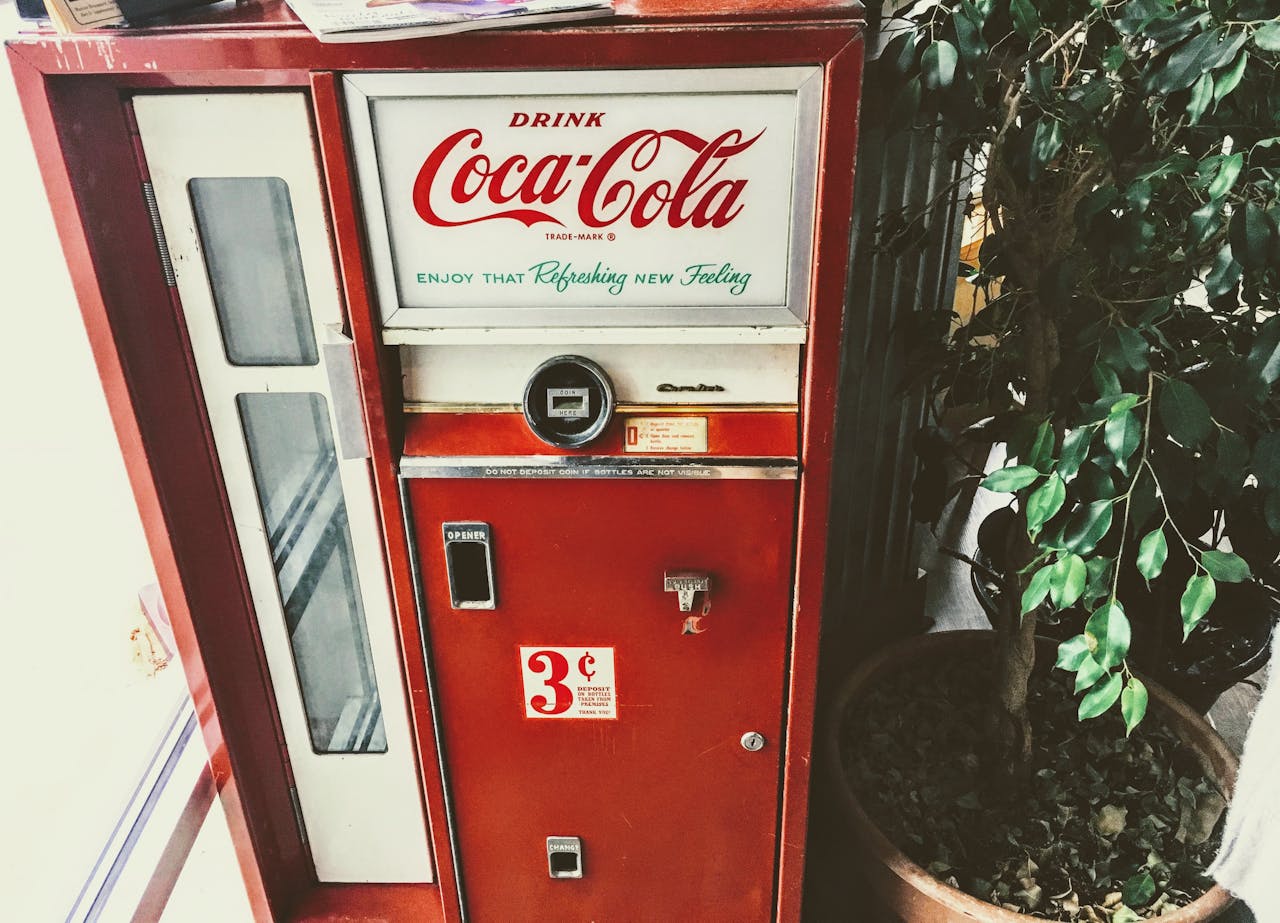From Atlanta Pharmacy to Global Icon: The Coca-Cola Company History
The Coca-Cola Company’s journey began in 1886 in an Atlanta pharmacy, where Dr. John S. Pemberton created the original formula—a mix of coca leaves, kola nuts, and syrup. What started as a local tonic sold at a soda fountain has become one of the most recognizable and valuable brands in human history. But Coca-Cola’s meteoric rise wasn’t an accident. It was a century-long masterclass in branding, supply chain dominance, and global cultural adaptation.
The Early Years: Branding Before It Was Cool
When Asa Candler bought the Coca-Cola formula in 1888, he didn’t just acquire a recipe—he bought the potential of a brand. Candler invested heavily in advertising, from painted wall murals to branded merchandise, long before mass media became mainstream. By 1900, Coca-Cola was available across most of the U.S.
The most significant early move? Bottling. By franchising its bottling rights in 1899, Coca-Cola created a vast, decentralized supply chain model—one still studied in business schools. It allowed rapid expansion with minimal capital investment.
Surviving World Wars and Prohibition
Coca-Cola didn’t just survive wartime—it thrived because of it. During WWII, Coca-Cola struck a deal with the U.S. military to provide soldiers with a 5-cent Coke anywhere in the world. This patriotic gesture led to the construction of over 60 bottling plants near military bases globally. Post-war, Coca-Cola already had a foothold in Europe, the Pacific, and beyond.
Meanwhile, during Prohibition, when alcohol was banned, Coca-Cola remained a legal indulgence, capturing a broader consumer base while competitors faded away.
Marketing Mastery: Selling a Feeling, Not Just a Drink
Coca-Cola revolutionized brand storytelling. From the creation of the modern Santa Claus image in the 1930s to the groundbreaking “I’d Like to Buy the World a Coke” campaign in 1971, the company didn’t just sell soda—it sold happiness, togetherness, and Americana.
By the 1980s, Coca-Cola had transcended its beverage status and become a global cultural symbol. Even astronauts drank it in space.
Coca-Cola vs. Pepsi: The Cola Wars
The 1980s and 1990s were defined by fierce competition with Pepsi. From blind taste tests to celebrity endorsements (Michael Jackson for Pepsi vs. polar bears for Coke), the rivalry pushed both companies to innovate rapidly. Coca-Cola made one of its few missteps during this era with the infamous “New Coke” launch in 1985. The backlash was so intense that the company had to bring back the original formula as “Coca-Cola Classic” within months.
| Year | Key Milestone | Global Impact |
|---|---|---|
| 1886 | First Coca-Cola served in Atlanta | Local success in soda fountains |
| 1899 | Bottling rights franchised | Supply chain scalability achieved |
| 1941 | WWII bottling deal | Expansion across 5 continents |
| 1971 | “Buy the World a Coke” campaign | First truly global brand storytelling |
| 1985 | New Coke launch and rollback | Brand loyalty tested and strengthened |
| 2024 | 200+ countries and 500+ drink brands | 1.9B servings of Coca-Cola drinks daily |
From Soda to Sustainability (And Diversification)
By 2025, The Coca-Cola Company is no longer just a cola business. It owns more than 500 brands, including Dasani, Minute Maid, Costa Coffee, and Smartwater. Health trends forced Coca-Cola to diversify aggressively into low-sugar, organic, and functional beverages.
Environmental and ESG Shift
Facing rising global pressure, Coca-Cola has pledged to become carbon neutral by 2040. The company’s “World Without Waste” initiative aims to collect and recycle the equivalent of every bottle it sells by 2030. It’s ambitious—but critical to keeping the brand relevant in a sustainability-conscious world.
Digital Disruption and Direct-to-Consumer Strategy
Coca-Cola’s post-pandemic transformation includes AI-powered supply chains, personalized vending machines, and direct-to-consumer e-commerce platforms like “Coke On.” In Latin America and Asia, mobile-first engagement has become the norm, with Coca-Cola leveraging local influencers and hyper-targeted campaigns.
In 2024, Coca-Cola even piloted CokeNFTs—digital collectibles tied to exclusive experiences. Some called it gimmicky, others saw it as a preview of the next-gen brand experience.
FAQ: The Coca-Cola Company History
Q1: When was Coca-Cola first created?
A: The original Coca-Cola formula was created by Dr. John Pemberton in 1886 in Atlanta, Georgia.
Q2: How did Coca-Cola become a global brand?
A: Through aggressive franchising, strategic wartime expansion, and iconic global marketing campaigns from the early 20th century to today.
Q3: What other brands does The Coca-Cola Company own in 2025?
A: Over 500, including Sprite, Fanta, Dasani, Minute Maid, Costa Coffee, Fairlife, and Powerade.
Q4: How is Coca-Cola responding to sustainability challenges?
A: Coca-Cola plans to be carbon neutral by 2040 and aims to recycle a bottle or can for every one sold by 2030.
Q5: What was the “New Coke” controversy?
A: In 1985, Coca-Cola changed its classic formula, triggering massive consumer backlash. It restored the original formula within months.
Looking Forward: Can Coca-Cola Stay on Top?
As of 2025, The Coca-Cola Company faces fierce competition—not just from Pepsi but from startups pushing kombucha, cold brew, CBD-infused drinks, and zero-plastic alternatives. But Coca-Cola has history on its side. The brand’s adaptability, global infrastructure, and emotional connection with consumers make it more than just a beverage company. It’s a cultural constant.
If Coca-Cola can continue blending nostalgia with innovation, and refresh its relevance for Gen Z and beyond, it might just dominate the next century too.
You May Like:



